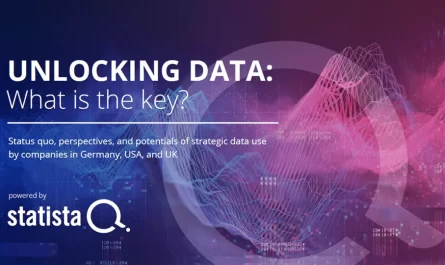How Will AI Impact UX Research Development in the Next Ten Years?
Ahead of UX360 EU Berlin, we sat down with Vadim Danilov, SaaS Development Director at yasna.ai, to explore the future of UX research in the age of AI.
Predictions are fun. They let us picture the future. Plus, in ten years, we can look back and laugh at how wrong (or right!) we were. Although AI has not yet realized its full potential, its impact is already impossible to ignore. While we can’t know the future with certainty, we can make some educated guesses and envision how AI will impact UX research in the next decade.
On-the-Go Interface Research
The simplest interface changes like sizes, positions and colors of main elements, will happen automatically. Imagine your website deciding, “You know what? That button needs to be bigger, and let’s make it purple!”. All of this will be based on user behavior analysis, with websites adapting to the most successful designs on the go. This will be accomplished through hundreds (or even thousands) of simultaneous A/B tests, with decisions made based on numerous behavioral parameters.
Theoretically, this could be done without AI, but it would be only a pale shadow of what AI can offer by analyzing vast amounts of data from different angles in minutes. The most convenient and popular interfaces will be those with many users and consequently faster testing speeds. In general, the latter part is already true today—the big players consistently offer higher quality and more effective interfaces.
Bad News for Synthetic Respondent Enthusiasts
Synthetic respondents will occupy a very small niche and won’t achieve widespread use. Even ten years from now, it will still be impossible to fully predict user behavior and their reactions to products and interfaces, which will lead researchers to use such tools extremely rarely (or stop using them altogether).
Synthetic respondents will be replaced by similar but differently organized products—data banks or neural networks that can predict research results before testing on an audience. However, such solutions will have low accuracy and won’t be suitable for researching fundamentally new ideas, products, or designs—only for fine-tuning minor details.
Further Democratization of Research
AI technologies will not only create new accessible research methods but also make existing ones cheaper. This will be possible by transferring routine parts of research to AI, generally speeding up the process, and simplifying research management.
These changes will make research available to more businesses, teams, and tasks. Smaller tasks that were often ignored will finally get done. Tasks that were solved only now and then will be solved more often. Anyone, even non-specialists, will be able to conduct research at a sufficient level. All that’s needed is desire, as the minimum competency level will be provided by AI.
A good example of a new method already making research simpler, faster and more accessible is conversational research. This method leverages AI to conduct natural, dialogue-based in-depth interviews with real respondents. Make sure to keep a close eye on this area and its emerging tools. They will be the first to unlock AI’s potential in research, reducing time investments and making the process of obtaining deep data cheaper.
The Value of Great Specialists Will Noticeably Increase
Although AI will occupy a large place in research processes and will be capable of performing many simple tasks, the human role in research will continue to play a crucial role (and even grow). Researchers will free up their time for higher-level tasks like goal setting, presenting results, and helping teams effectively use the obtained data.
The researcher’s role will expand to other business processes and require new competencies. For example, the ability to write prompts and use AI technologies to gather and analyze information will be extremely important in daily tasks. The good news is that no matter how advanced AI becomes, companies will still need a living, breathing human researcher.
Boutique Research Agencies Will Secure a Strong Position
They will focus on offering personal service to clients who want to use pre-AI research methods. Many clients (both companies and internal customers) will continue using AI tools as supplementary, not primary research methods for a long time, gradually reducing the share of classical research.
AI Will Tackle Previously Impossible Tasks
In the next ten years, the volume of classical research will still be large. The growth of the AI research market will mainly come from solving tasks that weren’t addressed before, that seemed impossible or impractical. For example, the idea of collecting 500 quality interviews used to shock any researcher. It still does, if the researcher is unaware of the new tools that can solve this task in a couple of days.
A similar trend is occurring in international qualitative research. Conducting studies across 10 countries with different languages, while feasible, remains highly challenging. As a result, projects are often scaled down, canceled, or pursued only when absolutely necessary.
Today, AI streamlines the process, allowing such research to be completed in days instead of weeks or months, with an organizational effort comparable to survey-based studies. All that remains is to correctly formulate the research objective and select an appropriate AI-based tool. Or wait a couple of years until the tool you specifically need appears.
AI will undoubtedly change the landscape of the entire market. It’s important to stay informed about the latest industry developments and not be afraid to try new tools. During this active industry restructuring, you could be among the leaders applying new ideas and solutions, or you could fall behind, missing out on new opportunities. Which one will it be?
It’s your last chance to register for the UX360 Research Summit 2025 and meet UX research leaders in person!
The ultimate gathering of UX research and design leaders is here—two days packed with the latest industry insights, cutting-edge methodologies, and next-level inspiration.
This year, the summit features 30+ industry leaders from global powerhouses such as Google, Roche, IKEA, Meta, Nestle, and many more.
Network with world-class UX professionals from around the globe. Whether you’re a researcher or designer, this event is a must-attend for anyone looking to stay ahead in the field. Last chance to register!










 by
by 

